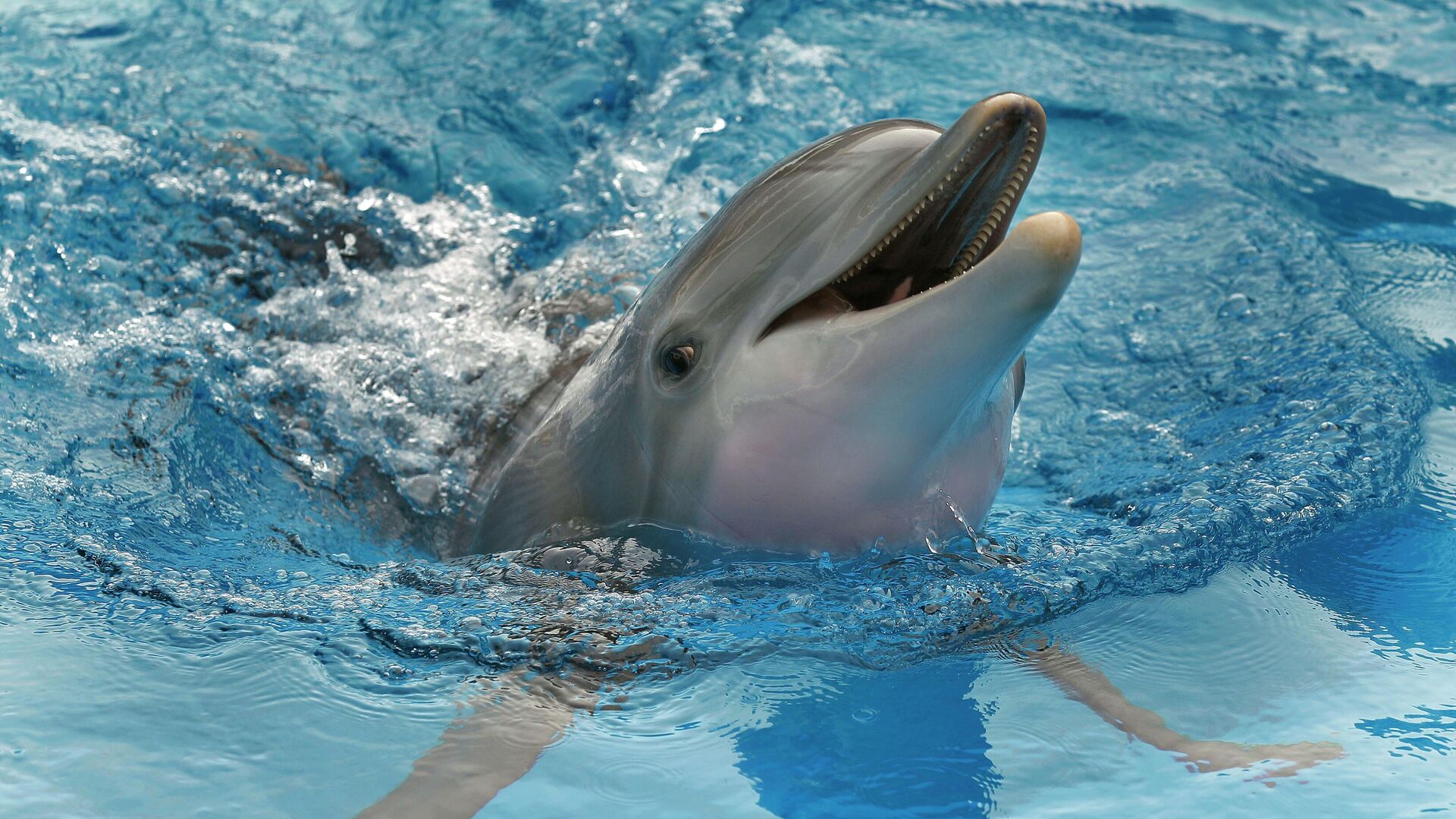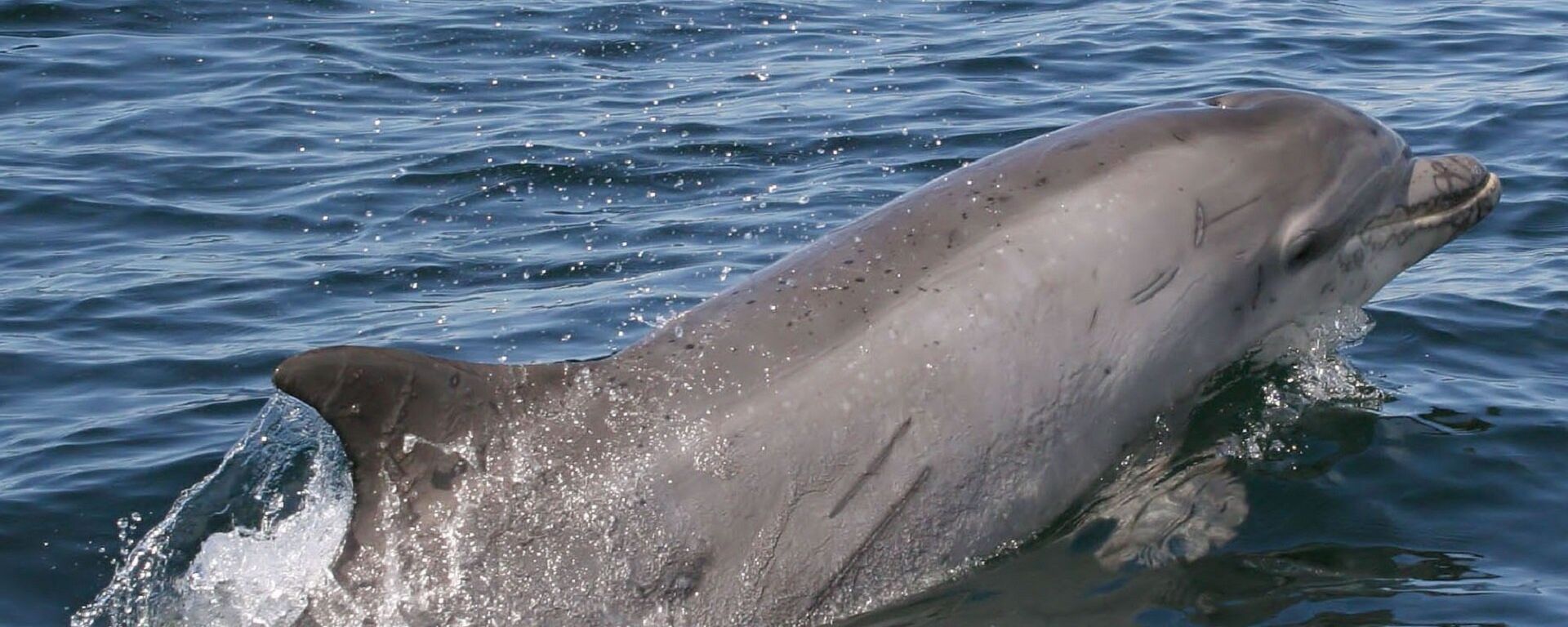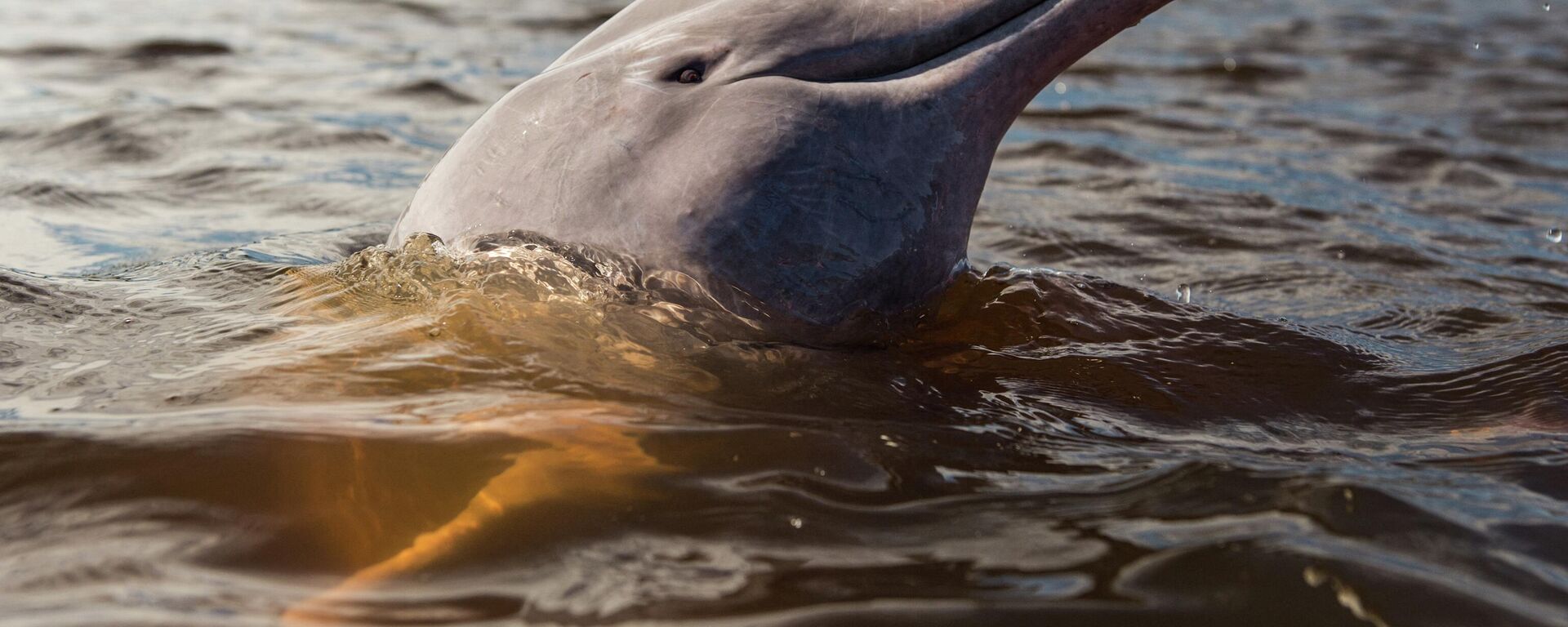No Hazing Allowed: Male Dolphins Partake in 'Frat-Boy Culture' to Attract Females, Research Finds
01:16 GMT 31.08.2022 (Updated: 10:42 GMT 21.04.2023)

© AP Photo / Chris O'Meara
Subscribe
According to the study, dolphins are the only species other than humans to be known to create such intricate, cooperative "bromances." In contrast, in their efforts to mate with females, some species, such as chimpanzees, display strong male rivalry. Their contacts result in violence rather than cooperation.
A "frat-boy culture" that rivals our own has been found in dolphin society, according to new research published this week in the journal PNAS.
According to a study by an international group of scientists, male dolphins are surprisingly cooperative. Males not only form several alliances, but these various groupings frequently collaborate to pursue females.
In Western Australia's Shark Bay, researchers tracked 121 adult male Indo-Pacific bottlenose dolphins (Tursiops aduncus) and discovered that those with stronger alliances mated with female dolphins more frequently and had better reproductive success. When chasing a female, a single male would typically work alongside two or three additional males.
"Models of human social evolution traditionally link intergroup alliances to other divergent human traits, such as pair bonds, but our study reveals that intergroup male alliances can arise directly from a chimpanzee-like, promiscuous mating system without one-male units, pair bonds, or male parental care," the study read.
Additionally, almost all of the adult male dolphins in the research were part of a secondary social alliance that included four to fourteen other dolphins. Researchers noted that these bigger coalitions did not always compete for female attention with other second-tier teams. Instead, they occasionally teamed up, building a third level of partnerships.
According to the study's co-lead author, Stephanie King, associate professor from Bristol’s School of Biological Sciences, in human cultures, cooperation amongst allies is commonplace and is a key factor in our success.
“Our capacity to build strategic, cooperative relationships at multiple social levels, such as trade or military alliances both nationally and internationally, was once thought unique to our species," she said. "Not only have we shown that male bottlenose dolphins form the largest known multilevel alliance network outside humans, but that cooperative relationships between groups, rather than simply alliance size, allows males to spend more time with females, thereby increasing their reproductive success."
The males were substantially more successful in mating with females when this occurred. In other words, their cooperation lowered competition. As a result of giving the males more time to pursue the females, the relationship between groups — rather than the size of the alliance — had the greatest influence.
"We show that the duration over which these teams of male dolphins consort females is dependent upon being well-connected with third-order allies, that is, social ties between alliances leads to long-term benefits for these males," ethologist Simon Allen from the University of Bristol is quoted in the news release as saying.
It is rather astonishing that dolphins can cooperate so well because, unlike humans, they do not create pair bonds during mating and males do not help care for their young.
Dolphins create strategic multilayer male alliances akin to those of modern humans, but having promiscuous social structures more akin to chimpanzees than to us.
Therefore, researchers believe that what distinguishes humans from dolphins has something to do with the social brain concept, although they admit that more studies need to be conducted in that field.
According to this theory, complex connections may have been an evolutionary factor behind both humans and dolphins' large brains and intelligence.
"The discovery of strategic, multilevel male alliances in dolphins is a surprising case of convergence that broadens our understanding of human social and cognitive evolution," the findings said.


